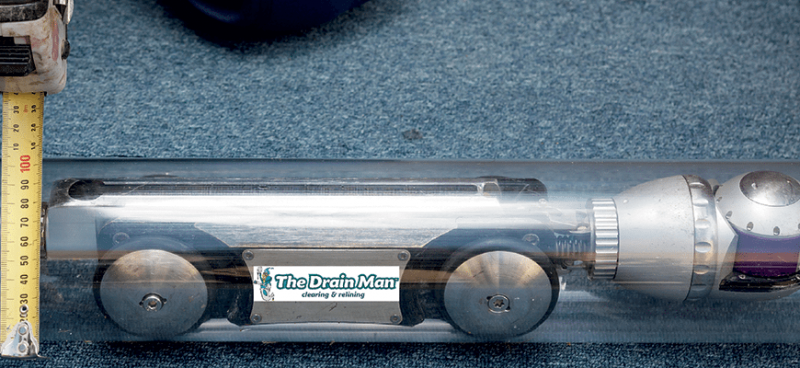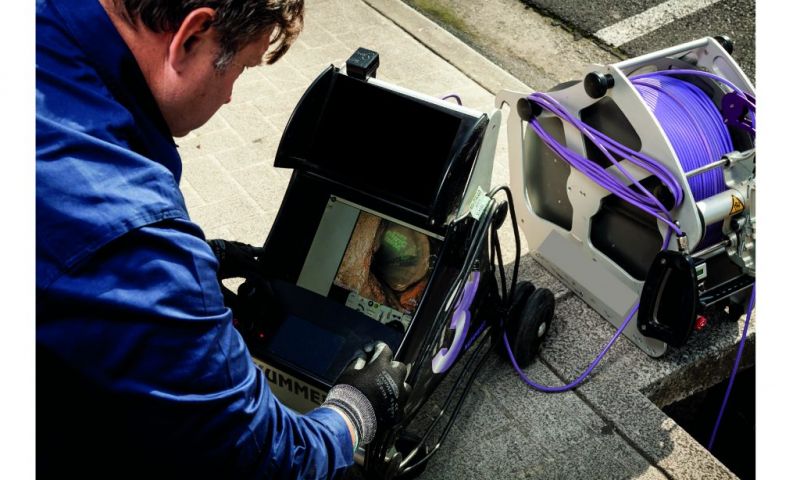The Drain Man Acquires Advanced Sewer Technology Suite
Published on by Water Network Research, Official research team of The Water Network in Technology
The Drain Man has acquired an advanced suite of sewer technology from Austeck , which makes its fleet of sewer rehabilitation equipment among the “best in the world”.
Water industry operators are always seeking more efficient and cost-effective ways to repair and maintain their sewer network infrastructure. Relining sewer mains has long been a popular trenchless alternative, although it has not been so easy to find solutions to repair sewer drain laterals, jump-ups or house connection branches (HCBs), leaving many water authorities to continually resort to costly, destructive and time-consuming excavations.
The Drain Man, who has a long history of rehabilitation work in the trenchless sector, has recently invested in technology to deliver intelligent solutions in lateral and HCB relining for Australian water utilities. Its fleet now includes three special purpose vehicles fully equipped with tractor cameras, robotic cutters and top hat/T-wrap robotic installers which, when utilised together, can reline lateral connections faster, better and with greater longevity than ever before.
The innovative sewer products were supplied by one of Australia’s leading suppliers of robotic opto-electronics, Austeck. It supplies more than 450 contractors, local councils and water utilities with, among others, CCTV and drain cleaning solutions. The Drain Man’s founder, Brendan Dover, says the recent acquisitions are part of its mission to assist utilities and related entities with The Drain Man’s experience in the trenchless relining sector.
Identifying the problem
Effective repair of sewer laterals and HCBs starts with a clear diagnosis of the problem being established. This requires high resolution footage with accurate measurements that precisely locate the problem.
The Drain Man’s fully equipped van enables its team to utilise one of two crawler tractor cameras which are able to operate in drains with diameters of 100 – 1,500 mm. The smaller tractor camera can inspect and report on drains down to 100 mm diameter, as well as 150 mm drains post-relining, which is a rarity in the industry.

Image: The Drain Man tractor camera can operate in drains with a diameter of 100 mm.
The Drain Man can perform a camera inspection of up to 320 m in a single pass, with the high definition footage captured inside the drain, enabling the team to precisely pinpoint and report cracks, breaks, tree-root intrusions, partially-collapsed junctions, etc.
The camera head also has the ability to rotate 360° and has an angled lift-tilt arm, which allows the team to inspect any part of the drain, including up into the lateral from the main, or down the lateral into the main, to provide accurate reporting and diagnosis. This is vital in planning the next stage of the operation.
Clearing the way
Once the issue has been identified, the rehabilitation team moves in with one of two powerful and versatile robotic cutters operated from a fully equipped mobile control platform inside a second vehicle. These advanced milling robots can clear away any debris, cut through blockages, tree root intrusions and even partially collapsed sections and/or junctions to prepare them for relining. They can work in drains ranging from 150 – 800 mm.
The built-in cameras in the European designed Power Cutter 100 and 200, enable the team to do fast and accurate work. Equipped with powerful cutting heads, all designed for specific tasks, there is virtually nothing the team cannot cut through.

Image: Fully remote controlled equipment eliminates the need for traditional pull-in techniques.
The final stage
Finally, once the section to be relined has been diagnosed and cleared, the team move in with the latest technology in top hat/T-wrap relining. It is an advanced solution to lateral and HCB relining that offers greater speed and efficiency in rehabilitating the oblique junction compared to older style, pull-in top hat techniques.
With lateral shaft lengths of up to 450 mm in length, the top hat is installed using a robotic packer that attaches to one of the power cutters providing full and precise remote control of the relining installation. The Drain Man’s team can install it with lateral junctions of 45°, 70° or 90°, and from 100 – 800 mm in diameter.
The base of the top hat that affixes to the inside of the main can be circular or the T-wrap style that wraps around the top 180° of the main providing a stronger, more stable relining of the junction. The relining system is also available with fast curing resins, allowing the team to install several top hats at a time, providing a faster, more efficient relining solution for oblique (OB) junctions.
Additionally, as it is robotically operated, the top hat can be used to accurately record the location of each OB junction, prior to the main being relined. The location data is then used by the robotic cutter to accurately cut openings for the top hats through the relined sewer main’s walls.
The Drain Man is also able to install integrated junction and main liners known as lateral connection liners, which are recognised as a complete solution to the structural stability of an OB junction. It not only offers these services to water authorities, but is also able to work with established main relining companies to assist with a number of before and after main relining services.
Source: Trenchless Australasia
Media
Taxonomy
- Sewage
- Infrastructure
- Infrastructure Management
- Sewer Networks